CES 2020: Cherry Unveils Viola Mechanical Switch for Low-Cost Keyboards
by Anton Shilov on January 10, 2020 10:00 AM EST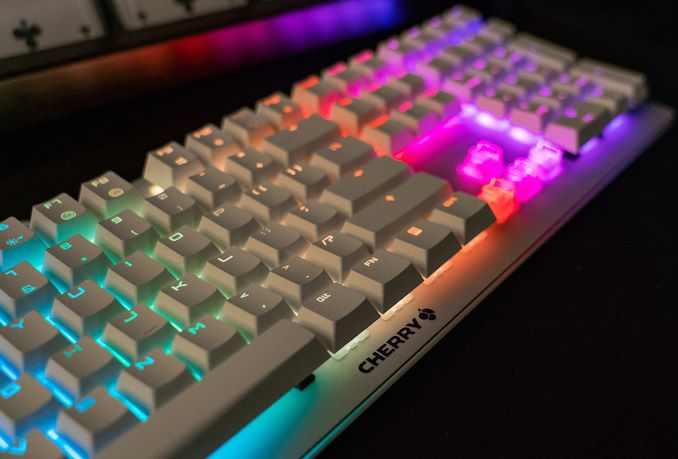
Since their resurgance in the gaming market almost a decade ago, mechanical switch keyboards have become and have remained a popular item within the gaming market as well as the market for high-end keyobards in general. And it's easy to see why, as mechanical switches have many advantages compared to keyboards with rubber dome or membrane switches; however they have one major disadvantage, their high cost. Cherry, the company that commands a sizable share of the switches market, introduced its low-cost Viola switches at CES 2020 that promise to enable keyboards makers to build cbeaper mechanical keyboards.
The Cherry Viola is a brand-new switch with a spring and V-shape bronze contact system. The switch uses an industry standard cross-stem that is compatible with a wide array of keycaps, and is contained in a precisely-engineered housing made of a plastic polymer featuring eight pillars. The engineering tolerance for the new switch is less than 0.01 mm, which helps to ensure wobble free keystrokes, a solid feel, and better typing accuracy. The switch uses a POM-socket, so it is frame mounted and does not require soldering.
Cherry’s Viola switch resembles Cherry’s MX Red when it comes to a 2 mm actuation point, a 4 mm total travel distance, and a 45 cN actuation force. Cherry promisees that the switch will be ‘mechanical’ and ‘tactile’, but the company does not want to draw direct parallels with its MX-series due to obvious reasons.
| Comparison of Mechanical Keyboard Switches | ||||||||
| Cherry Viola |
Cherry MX Blue |
Cherry MX Brown |
Cherry MX Red |
Cherry Silver |
Razer Green | |||
| Actuation Point | 2 mm | 2.2 mm | 2 mm | 2 mm | 1.2 mm | 1.9 mm ± 0.4 mm | ||
| Actuation vs Reset Point | no data | no data | no data | no data | no data | 0.4 mm | ||
| Total Travel | 4 mm | 4 mm | 4 mm | 4 mm | 3.4 mm | 4 mm | ||
| Actuation Force | 45 cN | 60 cN | 55 cN | 45 cN | 45 cN | 50 g | ||
| Actuation Feel | cross/linear | linear/tactile | linear/tactile | linear | linear | soft tactile | ||
| Switch Lifecycle | ? million | 50 million | 50 million | 50 million | 50 million | 60 million | ||
| Switch Color | white transparent |
blue | brown | red | silver | green | ||
The architecture of the Viola switch was engineered not only to reduce its costs, but also to decrease production costs for makers of keyboards. Furthermore, since Viola uses transparent plastic, the switch is fully compatible with SMD LEDs enabling manufacturers to build low-cost gaming keyboards with RGB backlighting.
At this time Cherry is not disclosing the cost of its Viola switch, but the company says that it expects the Viola to be a killer of rubber dome switches, which implies that it is rather cheap to make. Though ultimately the final price of keyboards are up to the manufacturers, so we'll find out the answer to the cost question in the coming quarters when the first products based on the Viola switch emerge on the market.
Related Reading:
- Cherry’s Secure Board 1.0 Encrypts Every Keystroke & Has Smart Card Reader
- Cherry Introduces New Low Profile RGB Switches at CES 2018
- Razer Unveils Optical Laptop Keyboard
- Kailh Introduces Low Profile Mini ‘Chocolate’ Keyswitches
- Cherry Launches MC 4900 Mouse with Fingerprint Reader, 1375 DPI Sensor
Source: Cherry



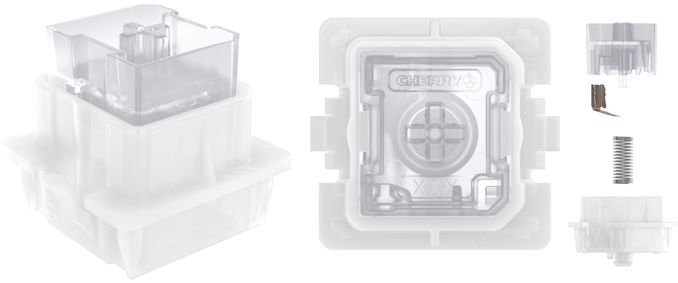

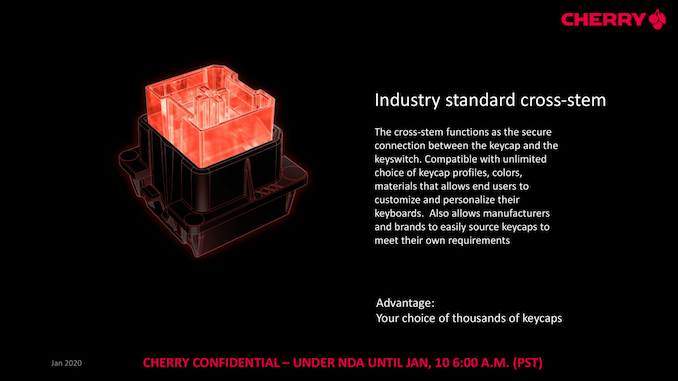
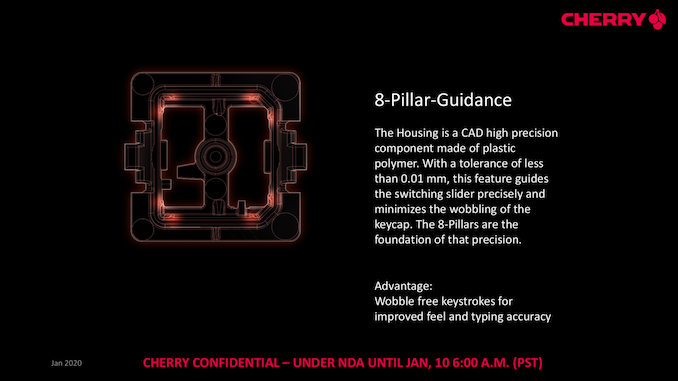
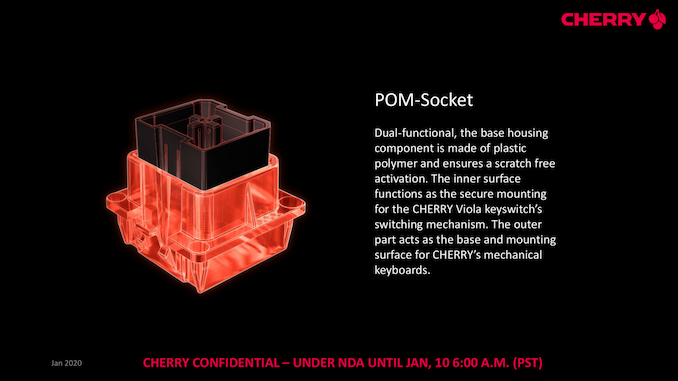








4 Comments
View All Comments
valinor89 - Friday, January 10, 2020 - link
This might, for the right price, be a imitation cherry mechanical switch killer. But I doubt that this will replace the membrane dome switch anytime soon, as the indicidual membrane switch is essentially free (inside the cost of the pcb and membrane itself) while each mechanical switch will have a unit cost.Samus - Friday, January 10, 2020 - link
Couldn't agree more. It's bold of Cherry to attack membrane 'switches' on price, when a more direct competitor would be those knocking off Cherry switches with cheaper mechanical designs, some of which are surprisingly good.Keeping this POM compatible and simplifying the PCB\frame design will essentially kill off any competition they had at the low-end with what appears to be a somewhat simpler, cheaper MX Red.
biosstar - Saturday, January 11, 2020 - link
Kailh switches are at this point actually on par with Cherry's switches and surpass them when taking the box switches into consideration (which the Viola switches resemble). They allow for better lighting and smoother and more stable travel of the stem.That said, I've been quite happy with my MX Silent Reds even though they can feel a bit "scratchy" sometimes.
Kamen Rider Blade - Friday, January 10, 2020 - link
I'm really curious to it's reliability rating relative to it's sibling switches. If it meets at least 50% or better, it should do fine IMO.